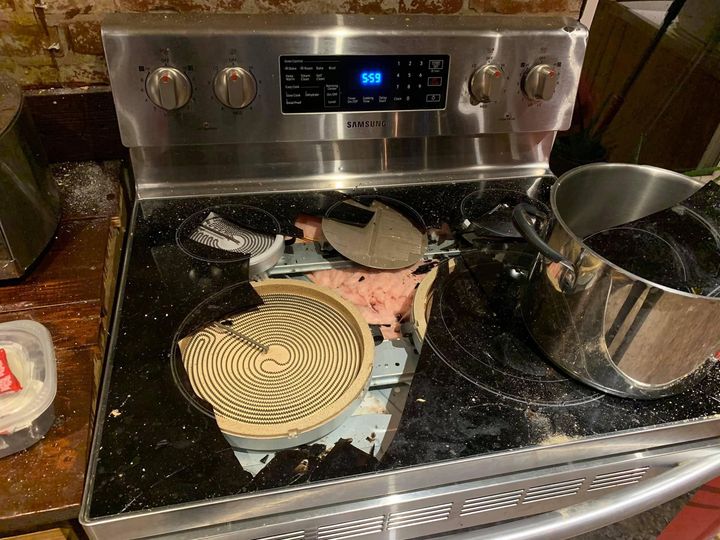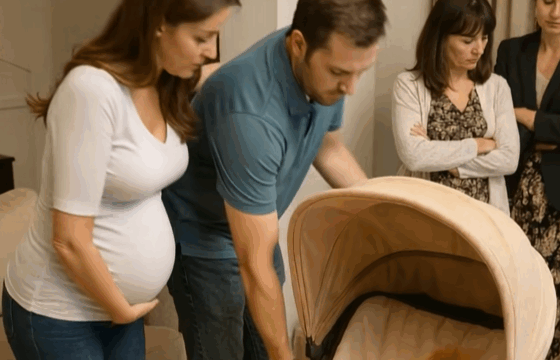Glass top stoves have become a staple in modern kitchens, loved for their sleek, polished appearance and easy maintenance. Unlike traditional coil burners that trap grease and food particles in hard-to-reach areas, the smooth surfaces of glass tops make cleaning a breeze—just a quick wipe and they look as good as new.

However, despite their durable design and sophisticated appeal, glass top stoves are not indestructible. In fact, one small but common mistake—placing a hot lid directly on the surface—can lead to serious damage, including cracks or even complete shattering. Many people assume that because the stove is built to withstand high temperatures, placing a hot lid on it is harmless, but this habit can cause significant harm. When you place a hot lid face-down on a cool glass surface, heat becomes trapped between the lid and the cooktop, creating a vacuum seal. As the stove cools, the difference in temperature generates uneven pressure on the glass. Over time, this stress weakens the material, leading to spiderweb cracks or, in some cases, catastrophic breakage. The damage might not be immediately visible, but repeated exposure to this stress can worsen the problem.
Small cracks can grow over time as the stove heats and cools during regular use, leading to serious safety risks. A cracked glass cooktop is much more than a cosmetic issue; it’s a potential danger zone. Once a crack forms, the structural integrity of the glass is compromised, making the surface vulnerable to sudden, violent breakage under high heat or heavy weight, sending dangerous shards flying across your kitchen. Additionally, cracks can disrupt the stove’s heating elements, causing uneven cooking temperatures, poorly cooked meals, and even burnt food. More alarmingly, deep cracks could expose internal electrical components, increasing the risk of electric shock or even a fire. That’s why it’s crucial to practice good habits that protect your stove and ensure the safety of your household. Fortunately, preventing this kind of damage is simple.
First and foremost, never place a hot lid directly on your glass top stove. Instead, use a heat-resistant trivet or set the lid on a cool section of the countertop. This simple adjustment can eliminate the vacuum seal effect and save your stove from unnecessary stress. Secondly, choose your cookware wisely. Not all pots and pans are created equal when it comes to glass cooktops. Use cookware with smooth, flat bottoms to promote even heating and reduce wear on the glass. Avoid rough or warped pans, as they can scratch the surface, and be extra careful with heavy items like cast iron, which can easily crack the glass if dropped. Another key tip is to keep your cooktop clean. Food spills and grease can bake onto the surface and create abrasive spots that weaken the glass over time.
Always wipe down your stove after use with a gentle, non-abrasive cleaner specifically designed for glass cooktops. Lastly, be mindful of weight limits. Although tempered glass is strong, it has its limits. Avoid placing heavy pots, small appliances, or even grocery bags on the stove, as excessive weight can cause cracks or breakage. If despite your best efforts your glass cooktop does crack, it’s important to act quickly. Immediately stop using the stove, as continuing to cook can worsen the damage and pose serious risks. Assess the crack’s severity; minor surface scratches might not require immediate action, but deep cracks or spiderweb patterns usually indicate that the cooktop is no longer safe. In such cases, call a professional technician. DIY repairs are not advisable because glass cooktops require specialized knowledge and tools to fix properly. Most of the time, full replacement of the glass top is the safest solution, especially if cracks have compromised the electrical components or overall structure. While replacing a cooktop can be expensive, it’s a necessary investment to ensure the safety and efficiency of your kitchen. In conclusion, treating your glass top stove with care is critical to extending its lifespan and keeping your kitchen safe. Avoid placing hot lids directly on the surface, use proper cookware, keep the surface clean, and be cautious with heavy items. Taking these small but significant steps can prevent costly damage and keep your cooktop looking and functioning like new for years to come. A little caution today could save you from major headaches and expenses tomorrow.





